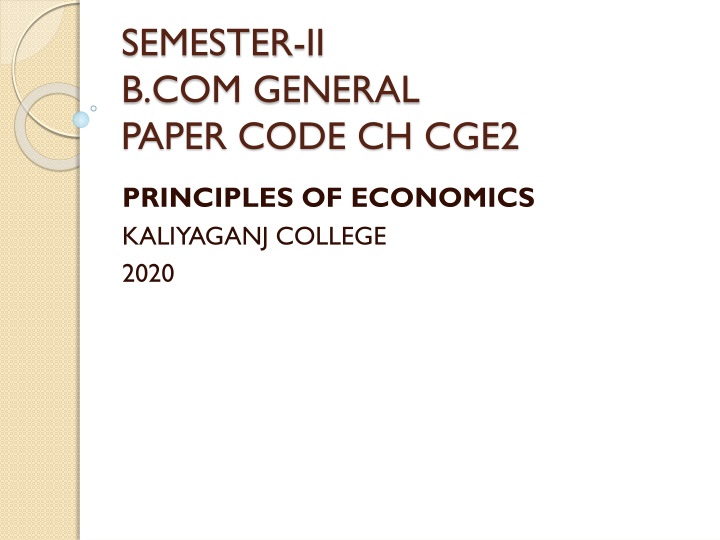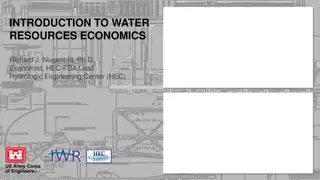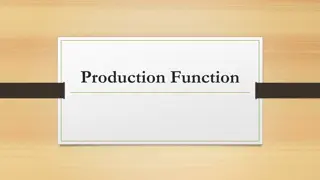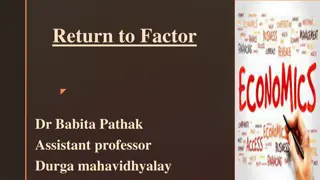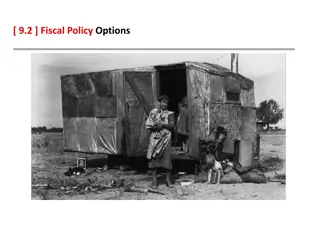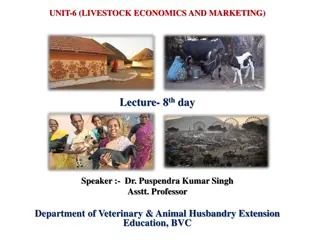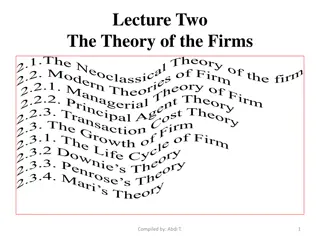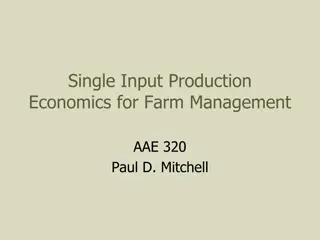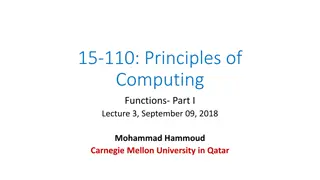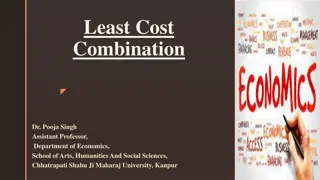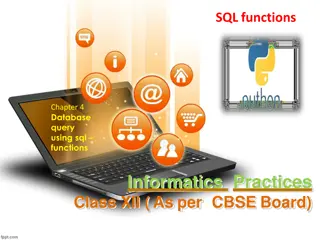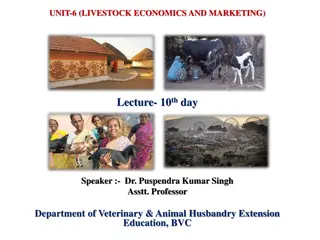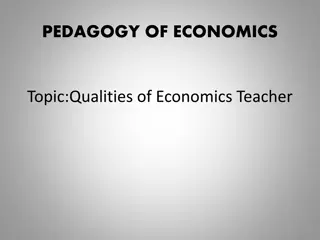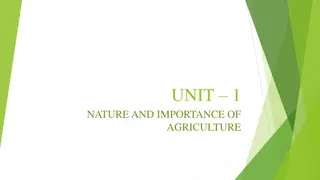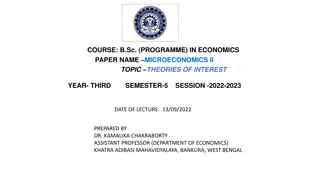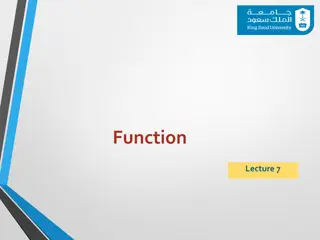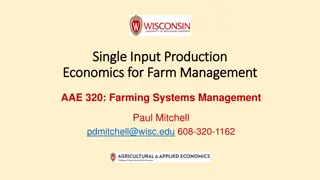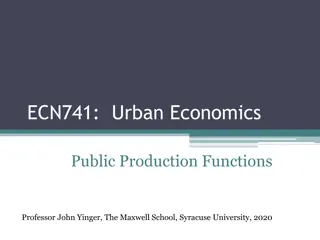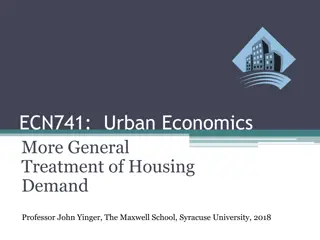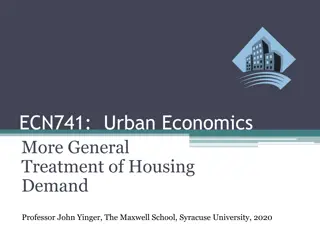Principles of Economics: Theory of Production and Production Functions
Explore the Principles of Economics with a focus on the Theory of Production, including the Production Function which illustrates the relationship between inputs and outputs. Learn about short run versus long run production, factors of production, and the Law of Variable Proportions. Gain insights into key economic concepts and theories in this comprehensive guide.
Download Presentation

Please find below an Image/Link to download the presentation.
The content on the website is provided AS IS for your information and personal use only. It may not be sold, licensed, or shared on other websites without obtaining consent from the author.If you encounter any issues during the download, it is possible that the publisher has removed the file from their server.
You are allowed to download the files provided on this website for personal or commercial use, subject to the condition that they are used lawfully. All files are the property of their respective owners.
The content on the website is provided AS IS for your information and personal use only. It may not be sold, licensed, or shared on other websites without obtaining consent from the author.
E N D
Presentation Transcript
SEMESTER-II B.COM GENERAL PAPER CODE CH CGE2 PRINCIPLES OF ECONOMICS KALIYAGANJ COLLEGE 2020
PRINCIPLES OF ECONOMICS THEORY OF PRODUCTION NAME OF TEACHER: DR. CHANDAN ROY ASSOCIATE PROFESSOR 9932395130 chandanroy70@gmail.com
Production Function Production Function shows technological relationship between Input (L, K) and Output (Q). It also shows the maximum output which can be produced by using alternative combinations of capital and labour. Production Function Q = f (K, L) Output refers to the number of units of the commodity produced Labour refers to the number of labourers employed
Production Function Capital refers to the number of capital equipment employed We assume all units of L and k are homogeneous and identical Technology is assumed to remain constant during the period of analysis .
Short Run Vs Long Run Short Run : It refers to that period of time when at least of the factors of the production function remains constant So it does not correspond to a specific number of months or years. Long Run: It refers to that period of time when all the inputs of the production functions are variable.
Short Run Production Function Q = f (L, K) is a short run production function. Where, Capital (K) is a fixed factor Labour (L) is variable factor TP : Total product which is produced during a given period of time Total product will change as more of the variable factor (L) is being used give fixed factor APL= TP/L, Average amount of output produced by using total variable labour force MPL = TP/ L, Change in TP resulting from an use of additional unit of labour
The Law of Variable Proportions This law exhibits short-run production functions in which one factor varies while the others are fixed. The law states that keeping other factors constant,(say, capital) when we increase the variable factor (labour), TP initially increases at an increasing rate, then increases at a diminishing rate, and eventually starts declining.
Stages of Prodction 1stStage: When TP increases at an increasing rate and MPL > APL. A producer does not operate in Stage I, as he can employ more units of L to efficiently utilize the fixed factors. So he will expand further. 2ndStage : When TP increases at a diminishing rate and APL > MPL , This stage is the most relevant stage of operation for a producer according to the law of variable proportions. 3rdStage : When TP starts declining and MPL<0. This is uneconomic zone and producer will not operate in this stage.
Concept of Isoquant An isoquant is a set of input combinations that can be used to produce a given level of output. In a single isoquant the output level is constant. In the adjacent diagram, A, B, C, D represent different combinations of L & K to produce Q=100 unit. Higher isoquant represent higher level of output. Slope of Isoquant (MRTSK,L =MPL/MPk
Concept of Isocost Isocost line shows the cost outlay of producer It shows the combinations of inputs which cost the same total amount of output Equation of Isocost line is:rK + wL = C Slope of Iscost= w/r
Optimal Employment of Inputs Optimal combination of Inputs will be at a point where, Slope of Isoquant = Slope of Isocost MRTSK,L = w/r The isoquant is convex to the origin at the point of tangency.
Ridge Lines Firm produces in those segments where isoquants are convex to the origin and lie between the ridge lines. Ridge Lines are locus of points where MP of inputs are Zero. In upper ridge line, MPk=0 In lower ridge line, MPL=0 Production techniques are efficient only inside the ridgelines.
Output Expansion Path Output Expansion Path is a line connecting optimal input combinations as the scale of production expands. It reflects least cost methods of producing different levels of output At any point of Expansion Path, MPL /MPK = w/r
Homogeneous Production Function A production function is said to be homogeneous of degree n if nQ= f( L, K) If n=1, the homogeneous production function exhibits Constant returns to Scale
Homogeneous Production Function If n > 1, the homogeneous production function shows Increasing Returns to Scale If n<1, the production function shows Decreasing Returns to Scale In case of Homogeneous Production Function, the output expansion path is always linear.
TOPIC TAUGHT BY DR. CHANDAN ROY 9932395130 ASSOCIATE PROFESSOR KALIYAGANJ COLLEGE
